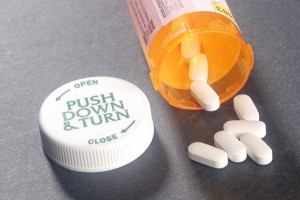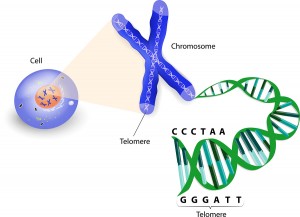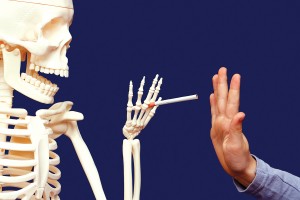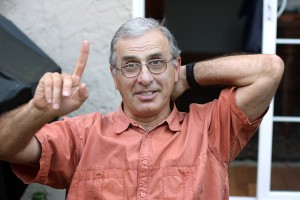A Swedish longevity study that went on for 50 years gave me the idea to blog about the factors that can help you to turn 100 and still have your mental capacity and good health. Let me introduce you to this study.
Researchers at the Sahlgrenska Academy in Göteborg, Sweden (which is the same as the University of Gothenburg) decided back in 1963 to follow a group of 855 Gothenburg men born in 1913 until they would either die or turn 100. The idea was to find out what killer diseases are in the way to reach such a ripe old age and if they would survive, what was it that made them to reach this age.
Think of it as a race to turn 100. The researchers had checkpoints along that journey: various surveys were conducted at the age of 54, 60, 65, 75, 80 and 100 to consider the factors that lead to longevity. 27% (232) of the original group reached the age of 80, and 13% (111) made it to 90. Only 1.1% of the men made it to the age of 100.
What were the causes of death for the other ones who did not make it? 42% of deaths after the age of 80 were due to heart attacks, 20% due to infectious diseases, 8% due to strokes, 8% due to cancer, 6% due to pneumonia and 16% due to other causes. 23% of the men over 80 were diagnosed with Alzheimer’s or dementia.
What else did the researchers find out? Factors that made people survive were refraining from smoking, maintaining a healthy cholesterol level and limiting coffee consumption to not more than 4 cups per day.
Another marker for longevity was either paying high rent for a condominium or own a house; in other words, a certain amount of wealth seems to be associated with longevity. Passing a fitness test at age 53 riding a bicycle was another peculiar finding of the study. This one points to the importance of fitness and clarity of thought as markers for longevity. There was a genetic factor also, as those who had a mother who lived to a ripe old age also survived longer than others who did not have this longevity advantage. However, researchers stressed that overall this genetic factor was of minor importance, the other factors that are under our control were much more important.
Two of the men who were 100 years old dropped out of the study: one because of dementia, the other one for personal reasons. Here are some of the facts about the other seven: none of them smoked; 2 lived at home, 5 in assisted living facilities. All of them wore hearing aids; all of them had good spatial and temporal cognition. All of them were slim, had good posture, but all used walkers to prevent falls or assist them walking. They were all able to read and watch TV, and most of them wore glasses.
Dr. Wilhelmsen who was part of the entire 50-year research effort said about the centenarians: “All of them were clinically healthy, satisfied with their circumstances and pleased to be living where they were.”
Other research about marriage, health and life expectancy
There is some peculiar research that found that men who are married are healthier than single men. This study came from the University College in London and was based on a group of 10,000 British people who were born within one week of each other on March 1958.
Being married or living common-law was beneficial for men compared to single men. One biomarker was the metabolic syndrome (a cluster of obesity, high blood pressure and diabetes), which was found to be 14% higher in non-married males while in females it did not matter whether they were married or not: they had the same low rate of metabolic syndrome. The longer men were married, the healthier they were. This was not so for the single male. Women, who married in their late twenties or early thirties, were much healthier in their later midlife compared to women who never married.
Harvard has published some interesting facts on men and marriage. A survey of 127,545 American adults showed that married men live longer than the unmarried males of the controls. A review of studies in the early 2000 suggested that when men were married to a well educated woman this may be causing heart attacks in the men. Quite peculiar, isn’t it? But this was refuted in a larger 2009 study, which found that married men live longer and are healthier when the partner is well educated.
Unhappiness and stress were singled out as a cause of high blood pressure, which leads to heart attacks later. Harvard reveals several other facts that are important with respect to longevity: cancer mortality is higher in unmarried men than in married ones; married men are at a lower risk of developing depression. They were found to have higher rates of satisfaction with life in retirement than their peers who never married. Marriage protects cognitive function and leads to a reduced risk of Alzheimer’s disease. Marriage is also associated with improved blood sugar levels and better outcomes with respect to cancer treatment or when hospitalized for other reasons.
General factors leading to longevity
We heard now several interesting points that seem to be linked to longevity. But what is it exactly that is behind some of these observations?
1. Diet
The Mediterranean diet is the gold standard as it has been shown to lead to the lowest mortality rates among diets.Note that longevity increases even more when sugar and starchy foods are avoided. And yes, a Mediterranean diet cuts down the risk for Alzheimer’s disease.
2. Exercise
It has been shown in many studies that regular exercise will reduce all diseases by about 50%! This is better than any medication; this is simply a must, if you are at all interested in living longer and healthier. Not only will your heart benefit from that, but your mind will thank you and not enter into dementia.
3. Alcohol
This has been drummed to death, but the limit is 1 glass of red wine for women and 2 glasses of wine for men. Personally I do not believe that this is true. I have explained in a blog that the same heart protective effect can be achieved by 250 mg of resveratrol as supplement and avoiding alcohol altogether will prevent a number of cancers.
4. Smoking
Originally the Framingham Heart Study has shown that smoking is an important risk factor for heart attacks and strokes. Hundreds of other studies have verified this. Despite this fact women as a group are now repeating the experiment that has already been completed for men: smoking causes lung cancer and many other cancers as well as cardiovascular disease. I see young women thoughtlessly walking around town puffing their lives away.It shows you how powerful cigarette commercials are. Sometimes it is frustrating to watch this as a health care provider!
5. Stress management
This means seeking ways to reduce stress like meditation, self-hypnosis, yoga and others. This also means building social ties and mutually supportive relationships. It makes you feel that you belong, you have your place in society, you help others, and they support you.
6. Avoiding iatrogenic disease
Physician-caused illness is getting more common. Medications have become stronger and often have more potent side effects. For instance, if a physician treats a gluten-induced rash called dermatitis herpetiformis with a drug called Dapsone, the patient can get severe anemia, violent abdominal cramps and bloody diarrhea. A strict gluten-free diet would probably have helped the patient to clear up the rash. All of the symptoms that the patient had to suffer as a result of Dapsone were from this “iatrogenic disease”, which simply means they happened as a result of the doctor’s malpractice that had caused a medication-induced disease.
7. Avoiding exposure to free radicals
Many different agents like substances from pollution, radiation, rancid unsaturated oils and others contain free radicals that damage tissues and cause inflammation. Antioxidants like vitamin C, E and resveratrol can stop this as is reviewed here.
8. Using vitamins and supplements
As already indicated this will help to reduce free radical exposure by the use of antioxidants; reduce inflammation by using omega-3 fatty acids, Co-Q-10, vitamin C and E, resveratrol and others.
9. Avoid accidents
As you are aware, accidents can kill. Wear seat belts, drive safely, and stick to speed limits, particularly in curves. Also don’t drink and drive, don’t use your phone and don’t text and drive. The use of street drugs is also a common cause for accidents.
10. Use bioidentical hormone replacement
When we experience the change of life, called menopause in women and andropause in men we can allow nature to knock us off the planet or use scientific knowledge. It has been proven that it is perfectly safe not to use Big Pharma’s hormone concoctions that the body cannot recognize. Synthetic hormones cause iatrogenic disease as proven in the Women’s Health Initiative. Bioidentical hormones, however simply replace what is missing in menopause and andropause.
The reason this is important is that our system has hormone receptors on the surface of all body cells. In order to have normal function, we depend on bioidentical hormones to assist cell metabolism. For instance the heart muscle in a man has testosterone receptors as has his brain. In women estrogen receptors and progesterone receptors are contained in the cells. Using the right mix of bioidentical hormones based on saliva hormone tests or blood hormone tests can help the treating physician or naturopath to rebalance the body’s natural hormone needs with bioidentical hormone creams applied to the skin.
Conclusion
Tools to turn a hundred years old and still be fairly alert and fit are listed above. It is important that we start thinking along those lines, because it is only prevention that gets us safely there. If you allow yourself to constantly live it up and run your health down, how can you expect to turn 100? In the last 50 years the life expectancy has risen at least 20 years (85 years now, 65 years then). Now we are seeing a downward trend in the obesity and overweight population and the diabetics. They are the ones vulnerable to iatrogenic disease and mortality. They also are at a higher risk to die from heart attacks and strokes and they are more likely to get Alzheimer’s disease. Also, single men would do well to see their physician more often to check out their health status and perhaps change detrimental lifestyles that married men would not get into, because their wives talk to them. If you can switch from a curative approach in healthcare that usually does not work too well anyways to a preventative approach, you have a good chance to make it to 100. I talk to you then.















